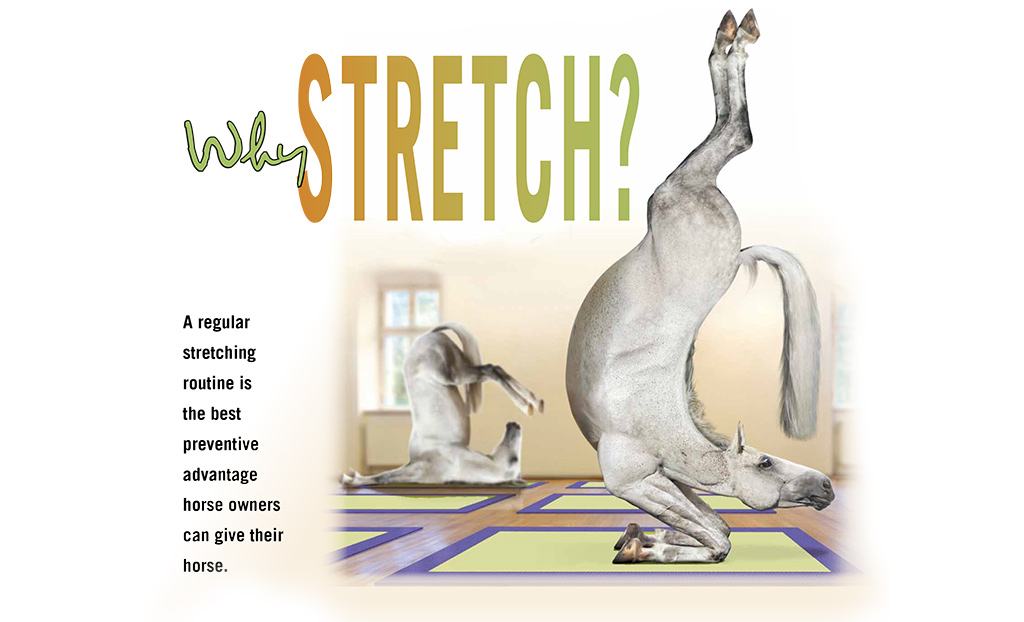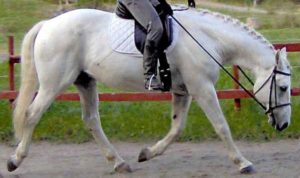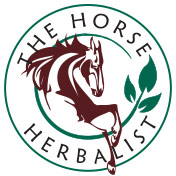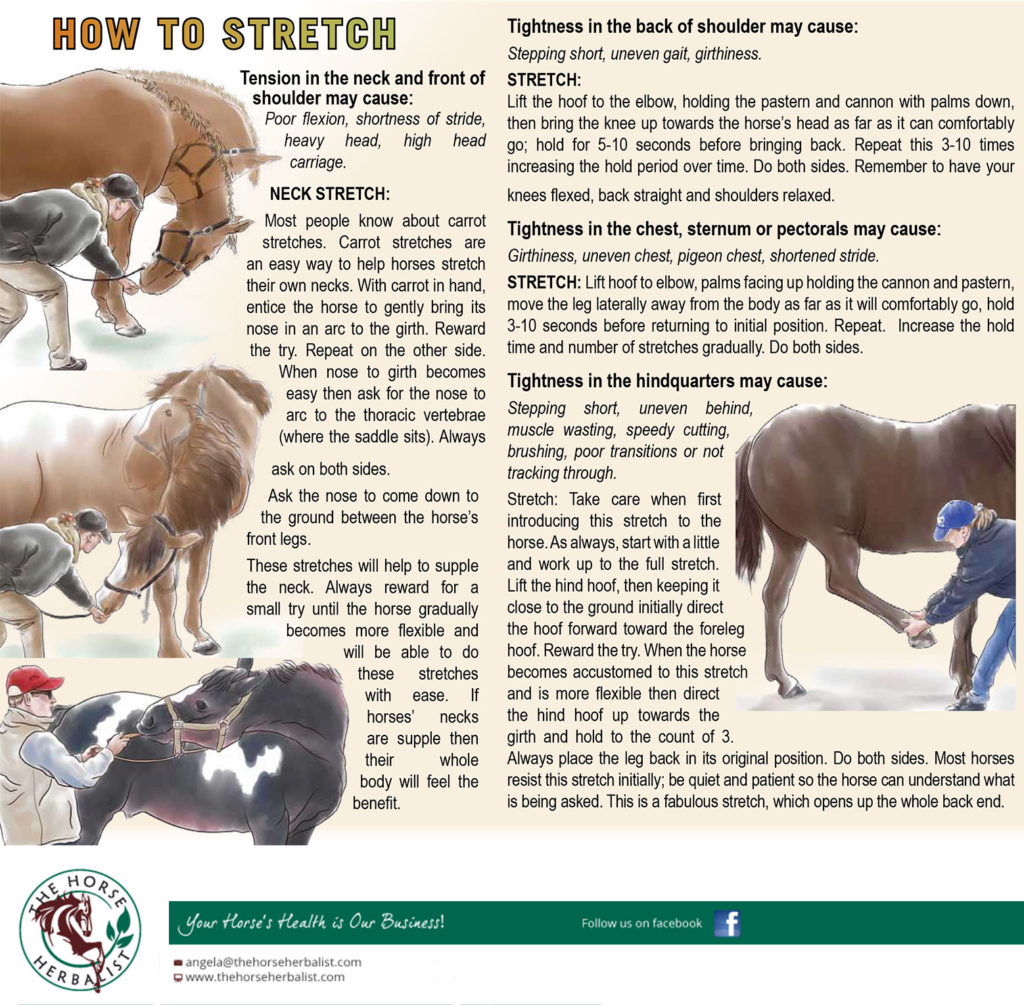Your cart is currently empty!

Why Stretch? The benefits of a regular stretching routine for horses
A regular stretching routine is the best preventive advantage horse owners can give their horse.
For many horse owners, including equine stretching exercises into their management and training regime is a hands-on way they can help maintain the horse’s suppleness. If muscles aren’t being used properly, they shorten and contract and if this situation continues for a period of time, the tendons and ligaments will start pulling on the bones of the joints. Introducing stretches helps lengthen contracted muscles and extends them to their proper position, relieving pain by taking the stress off the joint.
As well as reducing tension in the muscles thereby reducing the risk of pulled muscles, stretching can help in improving the tone of muscle fibres and elasticity of ligaments and joint capsules. A strong pre-stretched muscle will resist stress a lot better than a strong un-stretched muscle as strong, stretched muscles will greatly reduce connective tissue injuries.
Stretching enhances the sensory nerve endings in the muscles, tendons, ligaments, and joints. It is these nerve endings (also known as proprioceptors) that pass on information to the brain about movement and body position.
After an injury, proprioception is modified by sensations of pain and lameness. The body limits movement or uses other muscles to do the job as it tries to avoid these unpleasant feelings.
Stretching helps to ‘reset’ the proprioceptors. Holding a stretch for a minimum of 30 seconds can help jump-start the body’s remodeling process, which can restore positive responses instead of reinforcing negative ones.
Stretching is equally important for both humans and horses. If the horse has been inactive for some time, or has had any recent physical problems or surgery, particularly of the joints or muscles, always consult a qualified therapist before beginning a stretching program.
Start when Warm
Always stretch when the horse is warm, thus minimising the risk of damage by overstretching. Before starting, walk or lunge the horse for a short time or warm the muscles with a good massage.

The benefits of on-the-ground stretches will be noticeable when the horse is asked to stretch whilst under saddle.
The excellent article on massage by Anicca Main (June July issue of Hoofbeats) shared both theory and practical information on massaging the horse.
Horses are massaged to alleviate stress and tension in tender muscles. Healthy muscles feel even, full and supple, and those supple muscles are flexible. This allows the horse to maximise movement with ease and markedly reduces the risk of injury. Strained or spasmed muscles feel very ‘tight’ or hard and knotty. Massage improves circulation to the area by removing congestion and making oxygen and nutrients available to the muscle.
As it is important to know why to massage and the benefits, it is equally important to know when not to massage, for example, when there is inflammation, infection, bleeding, heat, or when the horse is hot – best to allow at least an hour to cool down.
Don’t Overstretch
The first time you stretch your horse always do it slowly and gently, giving the horse time to adjust its body and mind to the physical and nervous stress release that stretching initiates. Be very careful not to overstretch; hold the stretch in a relaxed manner to the count of ten if the horse is comfortable. The horse’s flexibility will quickly increase naturally when stretching is performed regularly.
Stretch after Workout
Stretch the horse after each work-out as part of the cool down process. This will increase circulation, promote relaxation and cut down on any muscle contraction that can occur after hard work.
Ask a qualified bodywork therapist to run through the stretches with you, as a regular stretching routine is the best preventive advantage horse owners can give their horse. Increasing suppleness and elasticity can greatly reduce the risk of pulled muscles or tendons.

